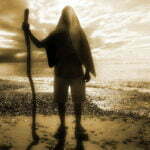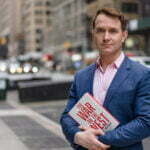A review of Forced Exit: The Slippery Slope from Assisted Suicide to Legalized Murder. By Wesley J. Smith.
Spence Publishing, 2003.
This is a revision and expansion of his earlier work of 1999. In it he brings up to date recent developments in the euthanasia wars. But the same concern for where society is heading, and the same call for action is found in this volume.
Smith argues that modern medicine is undergoing a seismic shift, as is that of the surrounding culture. Whereas societies and their medical practitioners once believed that saving life and protecting life was our highest and most noble calling, they have now come to see that killing in the name of compassion is both justified and necessary.
What has brought about such a radical shift in values and priorities? Smith argues that a number of inter-related causes can be mentioned. There is the “moral Balkanization” of Western culture, with a loss in moral absolutes and religious convictions. Then there is the elevation of personal autonomy as the highest virtue.
Also there is a very sophisticated political machine pushing the euthanasia agenda. Backed with big bucks and extensive marketing research, it has become adept at selling euthanasia. With plenty of euphemisms, misinformation and scare tactics, it is managing to convince many that death is desirable, and life is not.
And then there is the bottom line of money. The huge blowout in medical costs for the elderly makes the euthanasia alternative seem very tempting indeed. It is a major savings to bump off the elderly instead of treating them.
The hazards of legalizing euthanasia are many. Suffering would increase, not decrease. For example, the funding and research on problems like AIDS could easily be cut, with the idea that it would be better for these people simply to die. Pain relief, hospice work, and palliative care would also face major cutbacks and social undermining. Why bother, after all, when a quick lethal injection would be much cheaper and easier?
Smith examines some of the recent decisions made concerning end of life care, noting a slippery slope in action. In March of 1986 an ethical advisory panel of the American Medical Association declared that food and fluids provided by feeding tubes were no longer to be considered basic humane care, but medical treatment, and could therefore be withheld. Previously hydration and nutrition, even by means of tubes, were considered to be mandatory and necessary care.
This led to another momentous decision in 1994, when the AMA declared that foods and fluids could be withdrawn even if a patient was not terminally ill nor permanently unconscious, something that before was a requirement.
Smith points out that such steps along a slippery slope are not new, with a very similar incremental approach occurring in Germany early last century, leading to the final solution of the Nazis. A 1920 book written by two German professors, Permitting the Destruction of Life Not Worth Living became the cornerstone of Nazi practice which saw 200,000 helpless people deliberated killed by German doctors and nurses between 1939 and 1945.
The Dutch experience with euthanasia is another example of the slippery slope. First terminally ill patients were allowed to be killed. Then came the chronically ill, then the depressed, then even children. Once you accept the legalised killing of a patient is allowable, soon any and every sort of patient will become a candidate for the lethal injection. And the euthanasia virus is contagious. Belgium, a southern neighbor of Holland, also legalised euthanasia in 2002, making it the second nation in the world to do so.
The details Smith provides of the Dutch experience make for chilling reading, but they act as a sober warning to other nations. Prior to 1960 there was no push for euthanasia in Holland. But the 60s cultural revolution unleashed a host of liberalising trends, in many fields, be it sex, drugs, or the life issues.
A 1973 case saw the quasi-legalisation of euthanasia there. In 1993 guidelines were issued. But as Smith shows, these guidelines were a chimera, and euthanasia simply got out of hand. The guidelines were meant to keep euthanasia rare, only for the hard cases. But over time doctors interpreted loosely the guidelines, pushed the boundaries, and in effect ignored their intent.
Various reports have documented this slippery slope. The 1991 Remmelink Report found that nearly 9 per cent of all deaths in Holland were due to deliberate actions of doctors. And half of those were involuntary. And a 1996 study found that half of Dutch physicians took the initiative by suggesting euthanasia to their patients. Other research has found that it is usually families, not patients, who push for euthanasia. And a 1997 report found that doctors kill 8 per cent of all infants who die each year. And some 300 infants die each year because of medical neglect.
Teens suffering depression are also being bumped off. The list goes on and on. The Dutch experiment proves that once the door is opened, it does not close but simply gets pushed open even wider.
Taken as a whole, this volume makes for a worrying read. The trends in different parts of the world described here show us that we in the West have abandoned our respect for life, and have embraced the culture of death. Smith closes by noting that we have two options: we can choose the option of care and inclusion, or the option of death and exclusion. The sort of society that we become will be determined by the choices we make in this area.
[912 words]



















